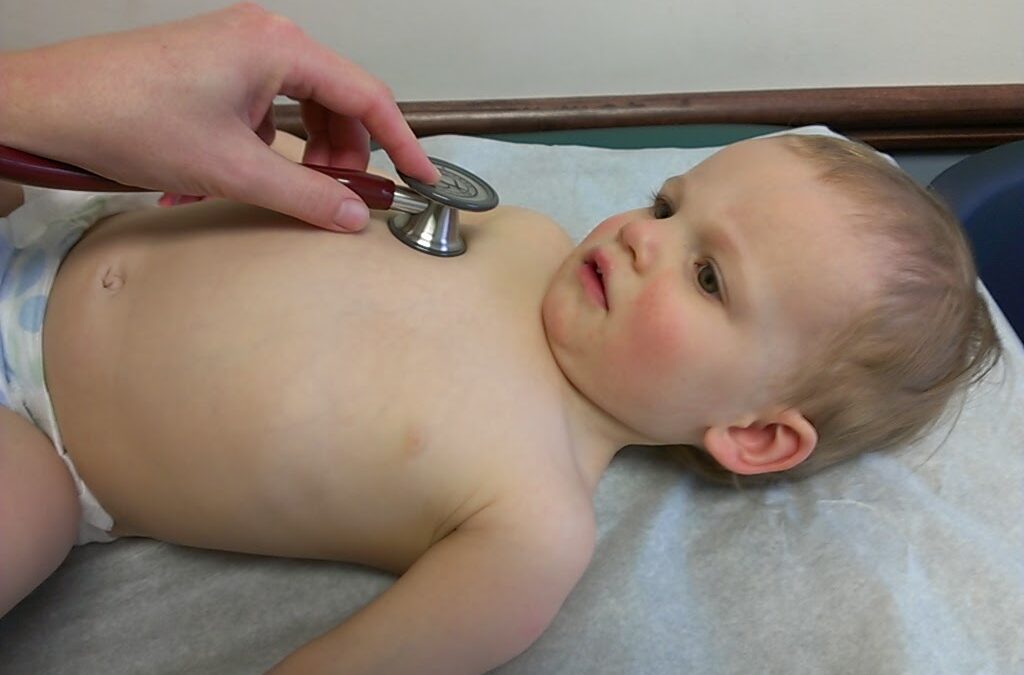Dealing with rare medical conditions is not an easy task, and the going gets tough when it’s your child.
Pectus Carinatum is one such chest wall-related ailment that could harm your child’s health if left unattended.
The condition’s name describes the malformation accurately. ‘Pectus’ means a bird’s breast, which indicates a bulged appearance. ‘Carinatum’ refers to the pointed keels of ancient Roman boats. Colloquially, it’s known as pigeon chest pain.
Pigeon chest causes the breast-bone to push forward, and it leads to unequal growth in other areas. Its symptoms include asthma, chest pain, tiredness, and shortness of breath, among others.
It’s an issue that is mostly seen in teenagers and can be treated without little hassle. Here are a few things you need to understand to help your child beat this condition –
Its Prevalence
Studies suggest that nearly 5% of people are born with a mild form of Pectus Carinatum. Yet, it remains a rare disorder when compared to other chest wall conditions – Pectus Excavatum.
Nearly 80% of those born with this condition are male. You can detect its signs in the early stages, but its effects become visible only after your child turns eleven. It’s a genetic disorder, and depending on the severity, the condition may worsen as your child enters adulthood.
The bottom line here is you need to be absolutely sure about the problem’s existence and severity. That brings us to the next section – diagnosis.
Diagnosing the Condition
A thorough physical examination is necessary to understand the intensity of the problem. The preliminary diagnosis involves the calculation of the chest’s depth with an X-ray. After measuring the diameter, they can determine if your child has Pectus Carinatum.
The X-rays will help identify scoliosis or other abnormalities leading to pigeon chest.
Here are a few other tests your doctor may recommend –
- A computed tomography scan (CT scan) to get a picture of the heart’s function
- An echocardiogram (echo) or electrocardiogram (ECG) to check if the spine is curved
- A pulmonary function test (spirometry) to find out if the lungs are functioning normally

Treatment Methods
Many devices and techniques are used to subdue or eliminate Pectus Carinatum. The most common ones are –
1. External Bracing
It has become a popular method of dealing with Pectus Carinatum in children.
Like orthodontics, your child would be expected to wear a customized brace under their regular clothes. Orthotists recommend that the children wear the brace for at least 14 hours a day.
It’s a less tedious option, but wearing a brace would need regular follow-up sessions. Additionally, your child may need multiple trips to the orthosis center to get the fit right.
2. Surgical Removal
Recent medical advancements make surgery one of the best available options. It’s inevitable in cases where there is discomfort in breathing or a threat to the heart.
While it’s ideal only for children in their teens, the younger ones might also need them if the case is severe. Do note that external braces could be a part of the surgery preparation routine.
There are two widely-used surgical procedures to treat the condition –
- Ravitch Procedure: Is an invasive method that involves making an incision in the chest. After going beneath the chest muscles, the cartilage bones causing the outward growth are removed.
- Reverse Nuss Procedure: Developed by Dr. Donald Nuss, a comparatively less-invasive procedure can be completed within two hours. A concave bar made of stainless steel is placed in the chest for around 2-3 years to stabilize the rib cage. Eventually, the protruding bone will go back to a normal position.
After surgery, seri-strips might be used to heal the incision areas. Your child might be required to take painkillers during the recovery phase.
While they can go to school 1-2 weeks after the surgery, strenuous physical activities have to be avoided. So, the little one cannot indulge in sports, run around during recess, or lift heavy books.
Attend all follow-up sessions so that the doctors can give a timely progress report of your child’s health. The postoperative phase may also need physiotherapy therapy for the strengthening of muscles.
3. Plastic Surgery
Instead of a grueling removal or reparation surgery, many take the cosmetic way. Plastic surgery can make the condition less prominent with minimal effort. Moreover, it does not disturb the bone’s natural growth.
Ideally, your child should not have any pre-existing conditions for this procedure to go smoothly.
4. Bodybuilding
When there is a minor aberration, bulking up or building muscle can do an excellent job of covering the protrusion.
Consult your doctor or a sports medicine specialist to understand if the idea is viable for your child. Remember, your child shouldn’t be taking up hardcore exercises in early adolescence.
5. Yoga
No research establishes Yoga as a viable treatment option. But proponents of the exercise routine claim that Hatha Yoga can help those with Pectus carinatum condition.
Either way, Yoga is a harmless option to try. It can improve the flexibility of muscles and increase the breath-capacity of your kids. That, in turn, can help in reducing the usual symptoms of pigeon chest pain.

Decision Making
When it comes to Pectus Carinatum, the UK’s NHS lays out the risks associated with surgeries. The list includes bleeding, extended observation periods, long-term discomfort, and few other complications.
Consult your family physician and an expert before zeroing on the treatment procedure. Rely on credible sources, cross-check the facts presented to you, and form an informed opinion. Ensure that your child and family members are on board before you go ahead with the treatment.
As a parent, you need to understand that it’s a genetic disorder, and there is not anything you can have done to prevent it. With the proper recourse, you and your child can overcome this hurdle.
Plan on getting a chest brace for your child? If that’s the case, here’s a guide that can help the little one adjust to it quickly.




